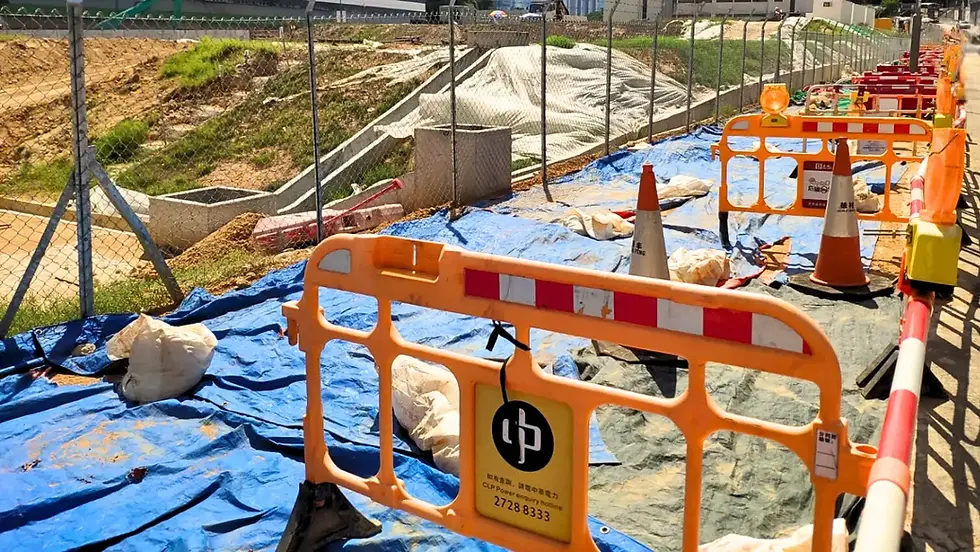Noise Control in Energy-Efficient Buildings: A Hidden Advantage for Compliance and Comfort
- riaangela9
- Sep 11
- 4 min read
Updated: Sep 15

As Hong Kong accelerates its push toward a greener, more sustainable city, energy-efficient buildings are becoming the new standard — especially in sectors such as data centres, public facilities, and commercial developments. While high-performance HVAC systems, advanced insulation, and airtight designs are key to improving energy efficiency, they also bring an added advantage: better noise control in buildings, helping to reduce overall noise pollution and create more comfortable urban environments.
For EHS managers, facility operators, and compliance officers, this offers a dual opportunity. Not only can energy upgrades reduce operating costs and emissions, but they can also enhance acoustic comfort and help meet Hong Kong's building noise regulations—a growing concern in densely populated areas where noise pollution is a significant environmental issue.
The Acoustic Payoff of Energy Efficiency Upgrades
Many features of green building design naturally contribute to better sound insulation and reduced environmental noise. For instance:
High-performance glazing and insulated facades, often installed to minimise heat transfer, also act as sound barriers, reducing traffic noise and other external noise pollution.
Advanced HVAC systems and variable-speed fans, chosen for energy savings, operate more quietly than traditional systems, reducing overall noise levels and building services noise.
Building envelope sealing and low-leakage designs reduce both energy loss and external noise intrusion, including traffic noise and air traffic noise.
Mechanical equipment enclosures designed for thermal efficiency can be adapted to mitigate vibration and operational noise, lowering machinery noise emissions.
These improvements create more than just quiet spaces; they contribute to occupant well-being, improved productivity in commercial spaces, and even equipment protection in sensitive environments like data centres. Moreover, they play a crucial role in environmental protection by addressing noise pollution at its source.
Why Noise Control in Buildings Matters Under Hong Kong Regulations
In Hong Kong, noise pollution is governed by several legal frameworks, including the Noise Control Ordinance (Cap. 400) and building services design standards. The Environmental Protection Department oversees the implementation of these regulations, ensuring that facilities such as hospitals, schools, and public buildings meet acoustic performance thresholds not just for comfort, but for regulatory compliance.
Additionally, the rise in 24/7 operations (especially in data centres) and urban proximity to residential zones has increased the pressure on operators to limit environmental noise. Non-compliance can lead to noise complaints, penalties, or costly retrofits. The Environmental Protection Department may require noise permits for certain activities, particularly in construction sites where construction noise and percussive piling can be significant issues.
Designing energy-efficient systems with noise mitigation in mind from the outset is more cost-effective than addressing acoustics reactively. In this context, energy efficiency and sound management become two sides of the same sustainable design coin, both contributing to environmental protection and reducing noise pollution.
What This Means for Facility Owners and Developers
For project stakeholders—from developers to facility managers—there’s growing recognition that holistic building design offers long-term value. Integrated planning that considers both energy performance and noise reduction helps ensure:
Regulatory compliance with environmental and building noise standards, including acceptable noise levels and sound pressure levels
Improved occupant satisfaction in offices, schools, healthcare facilities, and residences by controlling noise levels
Reduced equipment downtime in sensitive technical environments due to better noise insulation
Positive ESG impact, supporting sustainability ratings and certifications (e.g., BEAM Plus, LEED) through environmental protection measures
Mitigation of various noise sources, including traffic noise, air traffic noise, and domestic noise
ESC’s Role in Smarter, Quieter, and Greener Buildings
With over two decades of experience across Asia, ESC helps clients reduce their environmental impact and meet regulatory compliance. Through their SimplyEHS legal register product, ESC offers a comprehensive tool that streamlines compliance tracking and reporting for environmental, health, and safety regulations.
This platform not only simplifies the management of legal obligations but also enhances transparency and accountability within organisations. By leveraging this solution, clients can proactively address potential issues before they escalate, ensuring a smoother path to regulatory adherence. Additionally, their EHS and environmental specialists provide practical guidance on:
Selecting energy-efficient systems with low-noise operation to control noise and reduce noise pollution
Assessing acoustic impact of retrofits or new developments through environmental impact assessments
Supporting noise management plans under local regulations, including traffic noise control and construction noise permits
Navigating compliance across jurisdictions, including the Environmental Protection Department guidelines
Implementing effective noise control measures and noise abatement strategies for various noise-sensitive receivers
Conducting environmental assessments to ensure projects meet all necessary environmental standards and avoid noise violations
Comply with Noise Control and Building Energy Efficiency Regulations
Energy-efficient buildings are not just about reducing carbon; they're also about creating healthier, more resilient spaces. By complying with noise control regulations alongside energy performance, organisations in Hong Kong can meet modern compliance needs while fostering environments that support comfort, productivity, and well-being.
Our approach considers all aspects of environmental management, from noise exposure to overall environmental impact. We help clients navigate complex environmental legislation and address various sources of noise pollution, including traffic noise, construction activities, and air traffic noise.
Whether you're upgrading a commercial facility or designing new infrastructure, our consultants ensure your projects align with sustainability goals and environmentally sound standards. We assist with everything from managing construction noise to reducing emissions.
Stay ahead of EHS legal compliance with our EHS Legal Register — your go-to resource for up-to-date environmental regulations. Ensure your buildings meet the Environmental Protection Department’s noise guidelines and avoid compliance risks. Subscribe today for instant access, or connect with our consultants if you need tailored guidance for your projects.















